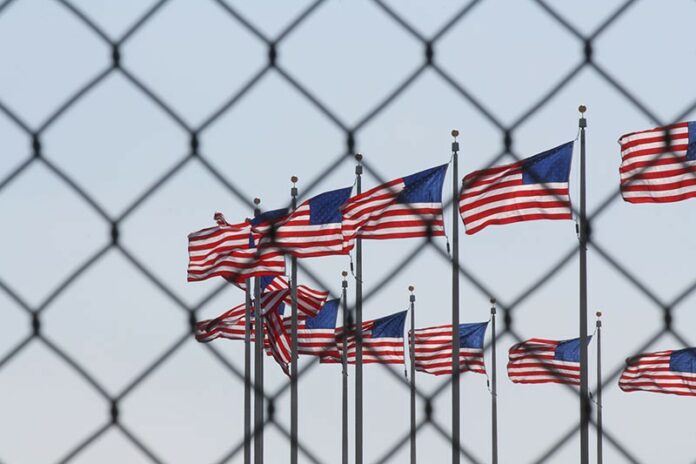The push by the federal Immigration and Customs Enforcement agency (ICE) to deport non-citizens continues unabated across the country, and while grassroots groups are rallying in Sonoma County, resources are stretched to meet the legal and social challenges.
In Sonoma Valley, the Sonoma Valley Action Coalition (SVAC) has taken shape to help protect the local undocumented population from deportation. The coalition sprung out of an initiative called It Won’t Happen Here, started by Susan Lamont, former director of the Peace and Justice Center of Sonoma County in Santa Rosa.
Lamont brought together a group of activists after the 2016 election and called on nonprofits and local governments to endorse a statement of refusal to comply with what she called the oppression of groups likely to be targeted by the Trump administration. In the group were two of us from Sonoma: Claudia Robbins, a retired educator, and myself.
Robbins, a co-founder of SVAC, says It Won’t Happen Here helped to spark a countywide conversation among various groups and entities about ICE and its activities. Robbins’ encouragement helped sway the Sonoma Valley Unified School District City to pass a strong resolution at the end of January affirming its commitment to protect students of all backgrounds and citizenship status.
There are about 38,500 undocumented immigrants in Sonoma County, according to the Public Policy Institute of California. Activists are at work trying to build bridges between organizations like SVAC and members of this large and vulnerable community.
“Groups like the Sonoma Valley Housing Group and members of the First Congregational Church turned their attention to immigration,” Robbins says. “But we still don’t have coordination with the Latino community. We’re working on it.”
The SVAC coalition has had a productive roll-out. A “rapid response” network will be in place in August to ensure that any deportations will be witnessed. A Family Preparedness Committee is putting together materials to help families gather the documents they’ll need to arrange for their children’s care, should they be deported. A Facebook page and website have been set up.
La Luz Center, a Sonoma nonprofit forcused on health, education and financial security for area Latinos, has also turned its attention to providing immigrant support. After the election, La Luz began to distribute wallet-size cards to inform people of their rights. If ICE shows up, the card says, don’t open the door, ask to see a warrant and call your lawyer.
But where are the lawyers? According to the American Immigration Council, only
2 percent of people without lawyers were able to successfully avoid deportation. But in Sonoma County, there are only two immigration lawyers. None of the four lawyers on the SVAC legal defense committee is an immigration attorney.
The field is highly complex, and immigration cases can go on for years, says attorney Steve Barbose, chairman of SVAC’s legal defence committee.
According to Ronit Rubinoff, executive director of Legal Aid of Sonoma County, a Santa Rosa–based nonprofit that aims to promote social justice and human rights among vulnerable communities, local cases are all heard in San Francisco, and along with the lengthy duration of many cases, there’s not a lot of financial incentive for lawyers here to take deportation cases.
Rubinoff’s biggest concern is how the fear of deportation is affecting families.
“One of the biggest issues is not that people are going to be taken en masse, but that they’re going to crawl under rocks because they’re afraid,” she says. “I think the number of people at risk of deportation is much smaller.”
Because of that fear, she says, immigrants are already less likely to seek legal assistance that would protect them from domestic violence or exploitation by landlords or employers.
But attorneys are preparing for deportations. Sonoma County’s immigration lawyers—Rick Coshnear and Christopher Kerosky—are leading classes to train lawyers in immigration law. Thirty lawyers have signed up for the six-week course. The first was held June 24.
The Sonoma County Board of Supervisors has allotted time for the Sonoma County Counsel’s Office to work on the local deportation issue, says chief deputy county counsel Alegría De La Cruz. De La Cruz has been charged to lead a fundraising effort to raise $2 million for legal services.
The California state budget, passed June 15, allots $45 million for legal services and attorney training. If passed, SB 6 will also fund training for immigration attorneys through qualified nonprofit organizations.
But none of the local immigrant-outreach organizations, including La Luz, would qualify for that funding. That strains an imbalance that already exists between communities with large rural populations, like Sonoma County, that must compete with larger urban nonprofit groups for funding. De La Cruz has requested that the bill be amended to address the imbalance.
Meanwhile in Washington,
a bill quietly passed the House Judiciary Committee on May 24 that would transform illegal immigration from a civil violation to a crime. Known as the Davis-Oliver Act, in honor of two policemen killed by a non-citizen in 2014, HR 2431 would “turn millions of Americans into criminals overnight,” said Rep. Jerrold Nadler, a New York Democrat.
If passed, the Davis-Oliver act would fund 12,500 new ICE agents and provide them with body armor and M-4 rifles. It would also allow local law enforcement to enforce federal immigration law even where local or state law says they can’t. At the same time, the White House’s 2018 budget provides an extra $300 million for ICE and Customs and Border Protection to hire more agents, $1.5 billion for more detention beds and $2.6 billion for border security.











